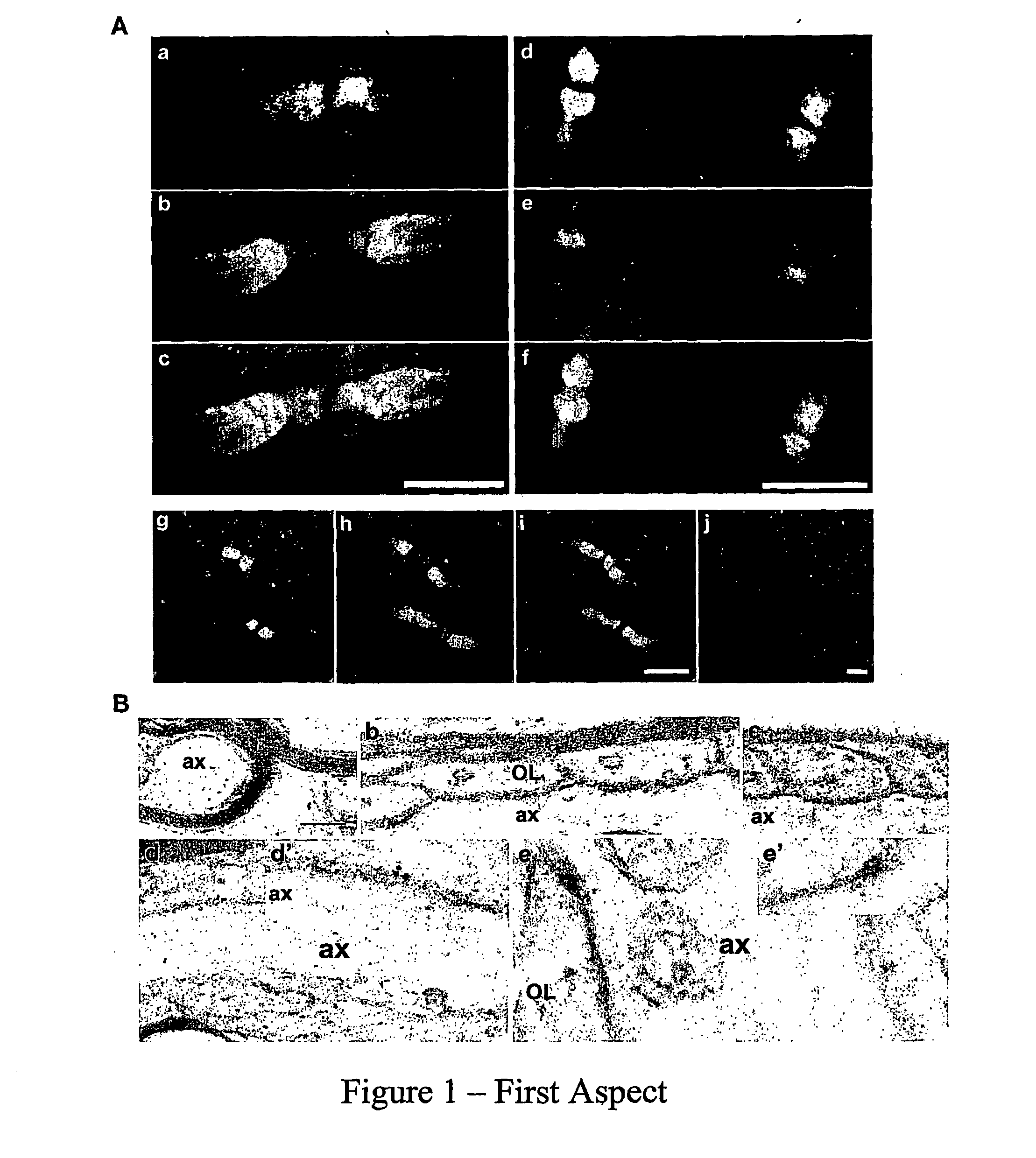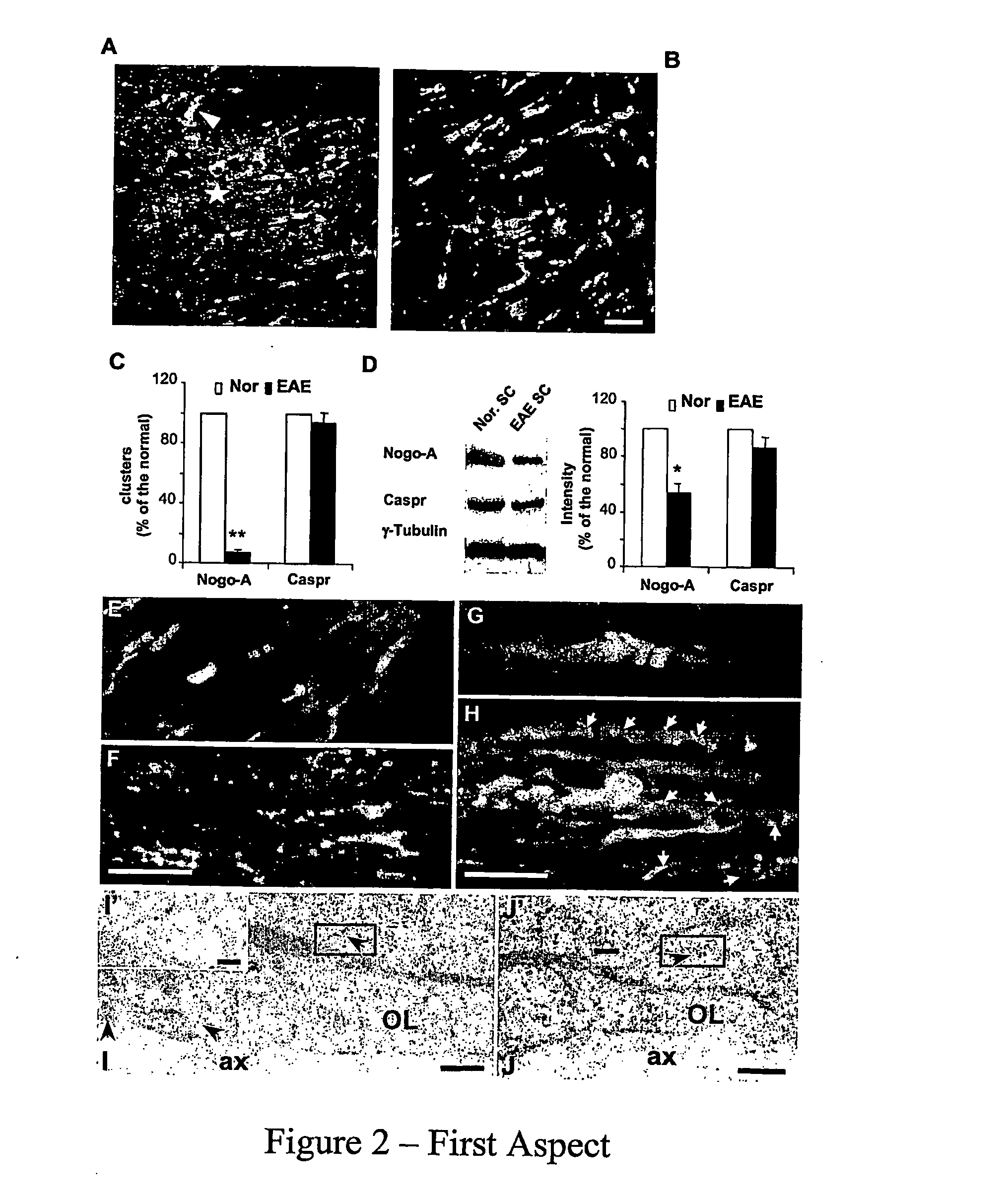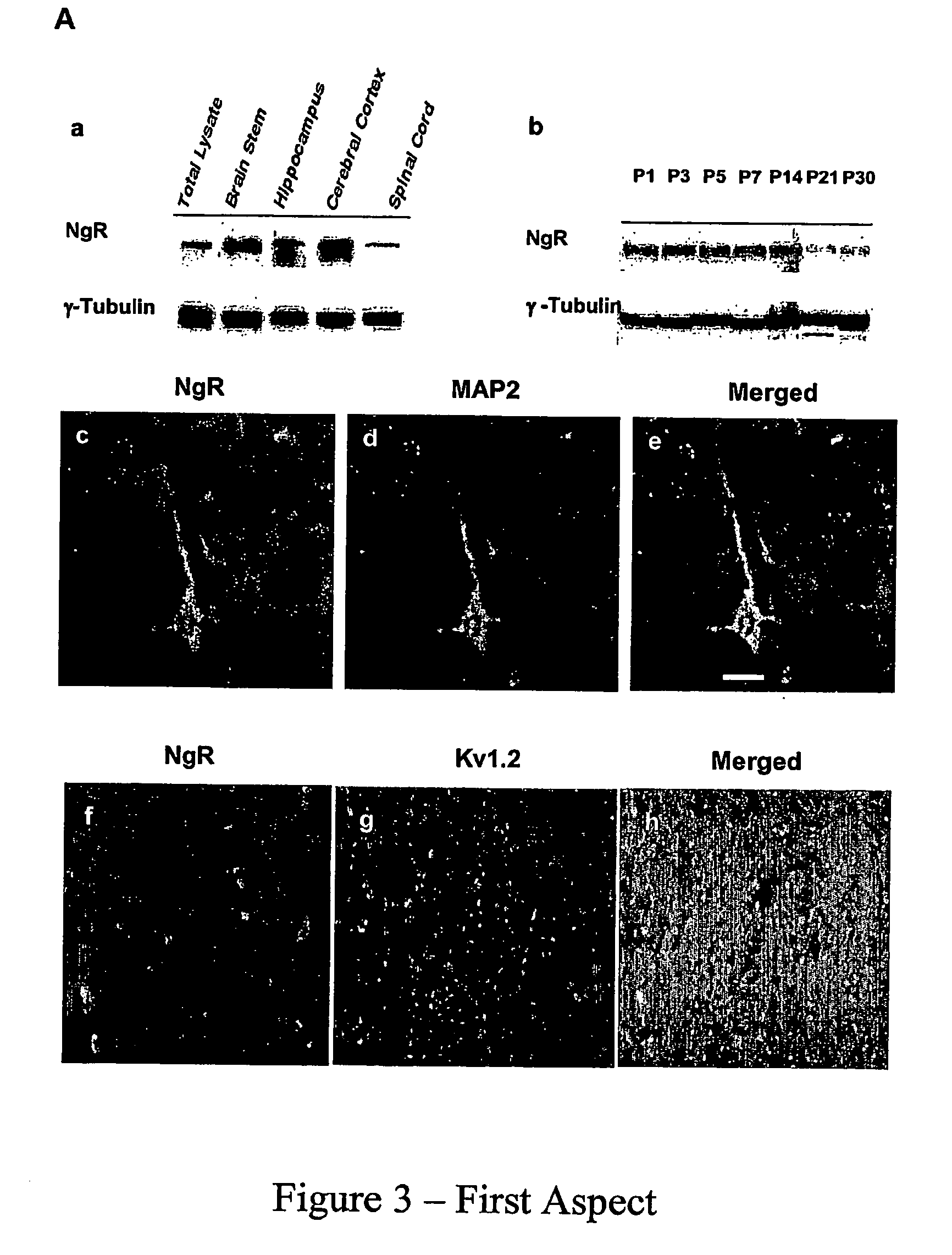Nogo, caspr, f3 nb-3 useful in the treatment of injury and disease to the central nervous system
- Summary
- Abstract
- Description
- Claims
- Application Information
AI Technical Summary
Benefits of technology
Problems solved by technology
Method used
Image
Examples
Embodiment Construction
Results
Nogo-A is Localized to the Paranodes of Myelinated Axons
[0100] The distribution of Nogo-A was examined along the white matter tracts of adult rat brainstem. In longitudinal sections, similar localization patterns of Nogo-A were observed with two different Nogo-A antibodies: one was developed in the inventor's lab (FIG. 1A, a-f; Liu et al, 2002) and another was a kind gift from Dr. Stephen Stritmatter (Yale University) (FIG. 1A, g-i; Wang et al, 2002). Nogo-A immunoreactivity (green) was confined specifically to paranodal segments along myelinated axons (FIG. 1A), as evidenced by double immunofluorescence labeling with Kv1.1 (red; FIG. 1A, a-c, g-i) or the Na+ channel (red; FIG. 1A, d-f). The specific labeling of Nogo-A in axonal domains was undetectable after the Nogo-A antisera (1:200) were premixed with 100 fold molar excess of antigen (FIG. 1Aj). The Nogo-A staining (green) flanks nodal Na+ channel labeling (red), and is flanked by juxtaparanodal Kv1.1 labeling (red), ...
PUM
| Property | Measurement | Unit |
|---|---|---|
| Composition | aaaaa | aaaaa |
| Interaction | aaaaa | aaaaa |
Abstract
Description
Claims
Application Information
 Login to View More
Login to View More - R&D
- Intellectual Property
- Life Sciences
- Materials
- Tech Scout
- Unparalleled Data Quality
- Higher Quality Content
- 60% Fewer Hallucinations
Browse by: Latest US Patents, China's latest patents, Technical Efficacy Thesaurus, Application Domain, Technology Topic, Popular Technical Reports.
© 2025 PatSnap. All rights reserved.Legal|Privacy policy|Modern Slavery Act Transparency Statement|Sitemap|About US| Contact US: help@patsnap.com



